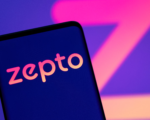HKMA Renames CBDC Project as e-HKD+ as It Enters Phase Two of Development
Hong Kong is advancing its efforts to transform the Hong Kong Dollar (HKD) into a blockchain-based currency. The Hong Kong Monetary Authority (HKMA) has moved its central bank digital currency (CBDC), the e-HKD, into the second phase of trials, focusing on adding functional enhancements. Taking cues from India’s Reserve Bank, which introduced similar features to the eRupee, Hong Kong is keen to make its CBDC more attractive and functional for end users by introducing offline payment capabilities and programmability.
e-HKD Project Rebranded to e-HKD+
As the initiative enters its second phase, the HKMA has rebranded the project as “e-HKD+.” The name change reflects the SAR’s deepening involvement in the digital currency ecosystem. According to an official announcement by the HKMA, the new name emphasizes the authority’s commitment to developing innovative solutions for digital money.
Enhancing Usability and Features
In the next phase, HKMA plans to integrate features like offline payments, enabling transactions in areas with poor internet connectivity. This is similar to how India’s eRupee handles transactions in rural or remote areas. Additionally, the programmability feature will allow corporate entities to structure incentives, such as paying salaries or bonuses using the CBDC, based on predefined conditions or performance criteria.
Focus on Real-World Usability
The addition of offline payments is particularly significant in regions with inconsistent network infrastructure. It allows users to transact even when internet connections are unreliable, boosting accessibility and convenience. For example, this feature would make it easier for businesses and individuals in rural areas or during network outages to continue transactions seamlessly.

Aiming for Broader Adoption
The HKMA is actively working with financial institutions and tech firms to make the e-HKD a compelling alternative to traditional payment methods. This phase of the initiative will include pilot programs involving a range of stakeholders to assess the practicality and scalability of the new features. This step will play a pivotal role in Hong Kong’s broader goal of maintaining its competitive edge as a global financial hub.
What Comes Next for e-HKD+
As the trials progress, the HKMA aims to incorporate further enhancements based on user feedback. By fostering a collaborative environment between the private sector, fintech companies, and government agencies, the project seeks to create a CBDC that is not only secure but also tailored to the diverse needs of Hong Kong’s financial landscape.
In summary, Hong Kong’s e-HKD+ initiative represents a forward-looking approach to digital currency, positioning itself alongside global counterparts like India’s eRupee. Through programmability and offline payment features, the HKMA aims to increase the CBDC’s appeal, usability, and potential for real-world application.

















